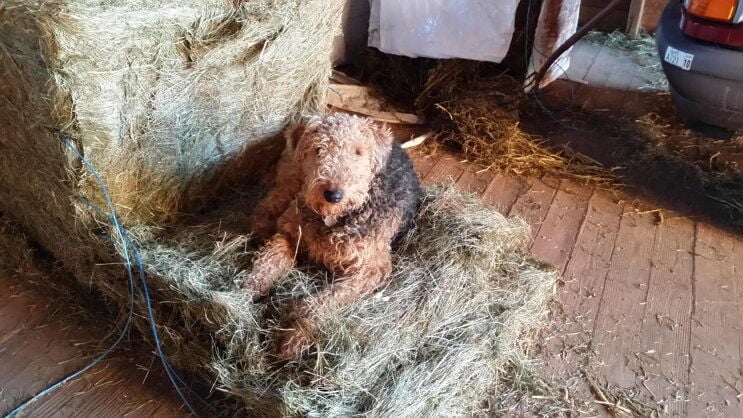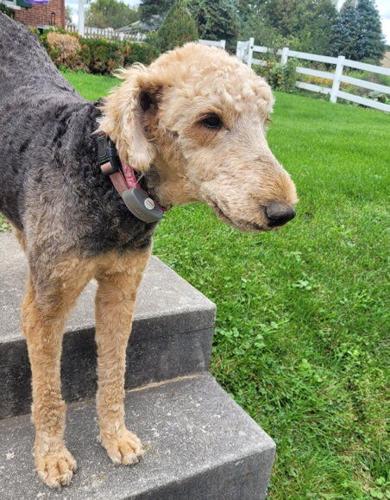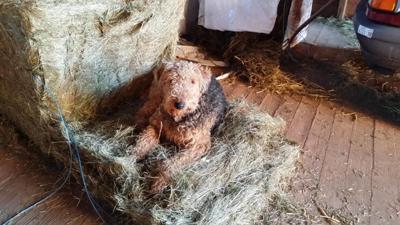Everyone has their favorite things. Some people like to drive Chevys, while others prefer Fords. Once upon a time, one farmer might have been a John Deere man, while his neighbor was an Oliver guy. There are cat lovers and there are dog people. And among dog people, oftentimes, people have a favorite breed of dog.
Sometimes dog selection is based on practical things, like how much space they require. Someone living in a small apartment might find a little Chihuahua or Pekingese works best for them. Some people look for a watchdog that barks loudly at strangers to scare away those with bad intentions.
Farmers usually want a multi-purpose canine. A pup that incorporates being a watchdog, a herding dog, a vermin hunter and a good family pet would make the ideal farm dog.
Our farm’s first dog was a fox terrier mix. “Snubby,” as my brother named him, lived to be 17 years old.
Upon his death, my dad took the opportunity to seek out a dog breed he recalled fondly from his childhood. He went looking for an Airedale terrier.
He found one at Mooreland Kennel in Sparta, Tennessee, and had it shipped to us by rail. Mitzi became our family’s first Airedale. But she wasn’t our last.
Over the past six decades, our farm has been home to a series of other Airedales — Troubles, Muffin, Molly, Oliver and now, Tillie.

Sue Bowman's Airedale Tillie all cleaned up after a thorough grooming.
Among them, only Tillie has been a “house dog” — or more accurately, — she and her Australian shepherd “sister” Lizzie are dogs who split their time both out and about around the farm, as well as in designated areas of the house.
Airedales are adorable-looking canines, often described as big teddy bears. They have black and light brown curly fur, a stubby tail and large brown eyes that can melt your heart.
They are called “the king of the terriers,” because they are the largest of the terrier breeds. In Robert Briggs Logan’s 1941 “The Red Book of Dogs,” he says, “The Airedale Terrier can be trained for numerous uses. In police work, in hunting and even as a war dog, the Airedale has long proved himself to be a very useful servant of mankind.”
I can testify Airedales are death on groundhogs, which is a big plus around a farm. Lizzie and Tillie like to double-team groundhogs who are foolish enough to trespass onto their territory. Lizzie herds the groundhog into a corner, then Tillie lunges in to finish the job.
Of course, like all dog breeds, Airedales also have a less positive side to themselves. They are smart but stubborn, so they don’t always respond to your commands, even when they know exactly what you’re telling them to do.
You might ask them to lie down, but they’ll just sit or stand there and give you the quirky Airedale head tilt that seems to say, “Are you kidding me?”
Airedales dislike cats, which apparently look like little groundhogs to the average Airedale. While our farm’s cat population vanished years ago, Tillie’s breeder advised us to get a kitten or two while Tillie was still a pup and let them grow up together. Thus, Tillie is fine with her feline contemporaries, Zane and Tuxie, but still threatens our newer additions, Pippa, Cletus and Moses.
Another Airedale quirk is — if left to their own devices around a farm — they love to explore. They’re double-coated, with a wiry outer coat, plus a soft undercoat, which combine to make them an all-weather dog. Unfortunately, that double coat also snares all sorts of dirt, like hay and straw and briars and burrs, all of which are plentiful around our farm.
During summer, Tillie likes to check out our garden, complete with its black raspberry canes. We need to pet her carefully, lest we get jagged with pieces of spiky raspberry brambles that get lodged in her fur. As autumn rolls around, many plants start to put out seed pod “hitchhikers,” which can’t help but adhere to Tillie’s coat as she noses around.
And speaking of Tillie’s nose, that’s where an assortment of burdocks accumulated a few weeks ago. We tried removing them by hand, without success. Since Tillie was overdue for a grooming, we made an appointment with her very kind groomer. She makes special arrangements to accommodate Tillie’s impaired immune system, which requires her to avoid contact with other dogs.
We asked the groomer to get rid of the burrs stuck in Tillie’s muzzle. Airedales typically have a cute, fuzzy muzzle, but it became necessary to shear it all away to get rid of those burrs. The groomer commented she never realized Tillie had such a long nose.
In truth, when Dennis went to retrieve Tillie, he didn’t recognize her at first with her shorn muzzle and sweetly fluffy ears. Tillie did, indeed, look like a different dog — and a slightly embarrassed one, too.
By the time they got back home, Dennis had christened her “Pollyanna the poodle” and for the next few days, we both had to chuckle every time we looked at her. Has our “poodle” learned her lesson and avoid brambles in the future? Probably not.



